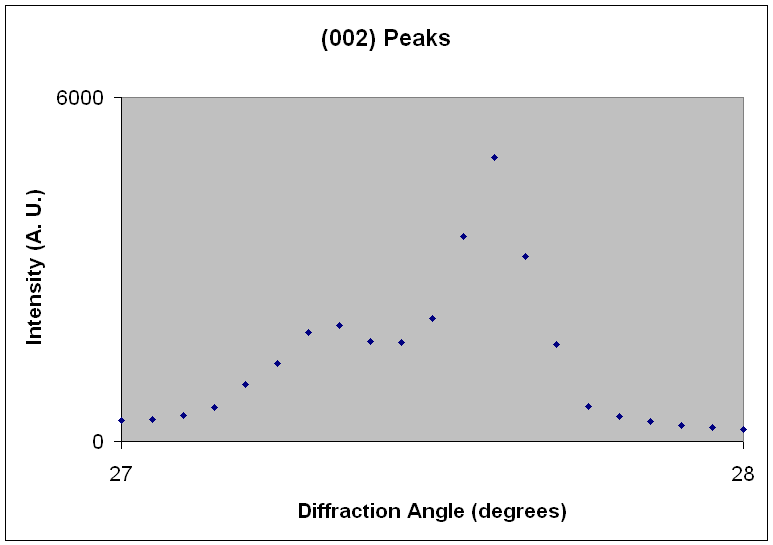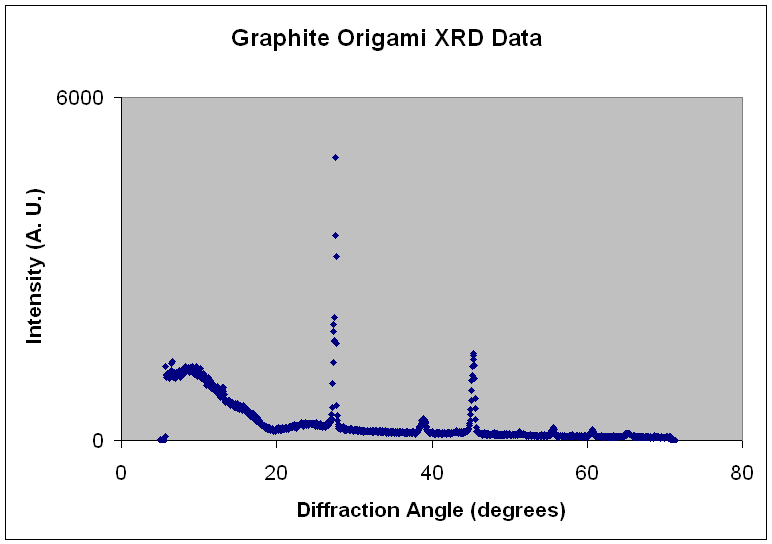"Powder" diffraction pattern of a crumpled (not quite powdered)
origami shell, using Cu Kα
radiation. The (002) peak at ~27.5˚, corresponds to a graphene layer
spacing of 0.32 nm, which is less than the 0.335 nm spacing we would expect of
ideal graphite[2]. Upon closer inspection,
the (002) peak is actually two distinct peaks, indicating the presence of two
distinct, compressed crystalline regions within the material.

This magnified view of the bifurcated (002) peak is evidence of
two distinct, compressed crystalline layers within a typical origami graphite
shell. The stress may be due to differential thermal contraction.
The origami structure forms at a temperature in excess of 1200˚C
and cools to room temperature before the XRD analysis. Although these
shells are pure graphite, a glance at the
origami page reveals why an origami shell may effectively be
composed of two dissimilar materials. The broad facets have a radial
orientation, while the narrow facets have a more tangential orientation.


